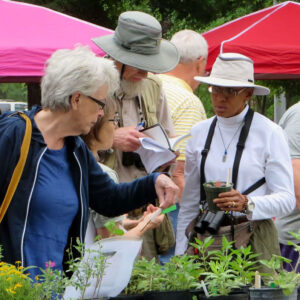Whether you have a couple of leafy friends or a whole jungle, indoor plants offer a cooler way to garden.
Texas summer heat is hardly a gardener’s dream weather. And with August scorch finally settling in, outdoor gardening is back to its most challenging season. Fortunately, you take your gardening inside with some indoor plants.
Whether you have a couple of leafy friends or a whole jungle, indoor plants offer a cooler way to garden. And you don’t need a green thumb to take care of houseplants. All they really need is a bit of love and a few necessities.
Here’s a quick rundown to up your houseplant savvy.
Water: Plants generally appreciate when the soil partially dries out. This typically means that most plants need watering no more than once a week, especially indoors. To test this, stick your finger into the top portion of the soil. If the top couple of inches are still moist, you can likely hold off on watering. Indoor plants will often indicate when they need more frequent waterings by showing signs of distress, such as wilting or losing “fullness.”

Pro tip: Bottom water! When a plant has at least one hole at the bottom of the pot, it can benefit from bottom watering. Just place the plant in a bowl, tub or sink filled with water to allow the houseplant to absorb what it needs. This can take about 15 minutes, depending on the size of the pot and the plant’s thirst. Bottom watering is a good preventive measure for overwatering as the plant only absorbs the water it needs. Over time it can also encourage a stronger, deeper root system.
Soil: Proper potting soil is critical for plant health. Ensure the soil is not compacted and light enough to allow necessary aeration to the roots. Depending on the moisture needs of the plants, garden centers offer various soil types. Some plants prefer chunkier soils that retain less water, while others like moisture-retaining soils to keep the roots moist longer.
Pro tip: Check the soil surrounding the root ball after purchasing a plant from a nursery or garden center. Sometimes they have a thin, problematic root mesh around the root ball. Whether you repot the plant or not, this can prevent it from flourishing. While helpful for initial growth, the mesh serves no purpose when a plant is blooming.

Sunlight: Sunlight is essential for plants as they require it for photosynthesis, but different plants require different amounts of sunlight. Plants can be very vocal about their needs regarding sun requirements. A plant lacking sunlight may have yellow, wilting or small leaves, while a plant that gets sufficient sunlight won’t just look healthy, it will also have large, flourishing leaves.
Pro tip: More sunlight leads to larger, healthier leaves. Large leaves are a sign of contentment with the amount of sunlight a plant is receiving. Houseplants tend to grow larger leaves with more sunlight availability.
Growing houseplants can involve some trial and error. Not every plant is the same, but if you listen, most of the time they’ll let you know what they need.
Stella Marti is an intern with the SAWS Conservation department.


